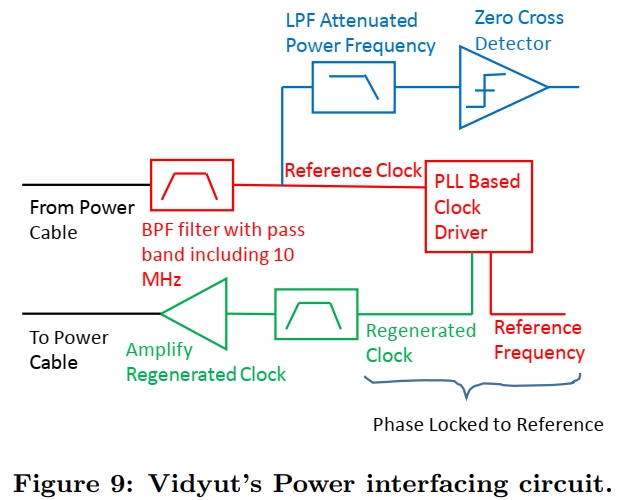Vidyut:Exploiting Power Line Infrastructure For Enterprise Wireless Networks

Main content
Synchronization is especially important for wireless sensors, such as distributed networks with limited energy, computing power, and storage capabilities. Synchronization generally includes frequency domain synchronization and time domain synchronization. Frequency synchronization is to keep all devices on the network running at the same rate and time synchronization is an important reason that affects device performance and network communication. The current synchronization technology can only reach milliseconds, but some scenes require nanoseconds. Moreover, some technologies are limited by the scope of the transmitter. It is feasible and convenient to use power lines to achieve synchronization, because the power line infrastructure already exists and is accessible to most nodes in the enterprise network. The author introduces the Vidyut system, which utilizes an easy-to-access and ubiquitous power-lines to synchronize time and frequency domains between nodes that are distributed outside of a single collection domain. Vidyut uses the powerline infrastructure to distribute the reference clock to nodes in an enterprise network. Each node locks its own carrier frequency to this synchronous clock to achieve frequency synchronization between distributed nodes. However, there is a problem of attenuation in power line transmission, which makes the reference clock unavailable. To overcome the attenuation of the distribution network, each Vidyut node regenerates the reference clock and feeds it back to the power line. And the power line has multiple noise sources, but the author believes that it has a small impact on the Vidyut system and can be accepted. Vidyut uses power frequency to achieve time synchronization. Through experiments, Vidyut is able to achieve an average phase mismatch of about 0.0218 radians for frequency synchronization, and it provides an average of approximately 225 ns of time synchronization within 450 ns. Vidyut can reach a throughput gain of 8.2x over MegaMIMO, 7x over NemoX and 2.5x over OFDMA systems.
Advantage
- The author is the first to propose a solution that provides synchronization across multiple conflict domains.
- The scheme proposed by the author is feasible and the effect received is better than the previous method.
- The author considered a number of experimental parameters for the experiment, I think the experimental setup is very good, and the consideration is also very thoughtful.
Weakness
- This paper is not very compact in the overall content.
- The author’s method can’t dealt with the problem of CSIT.
- Some of the author’s diagrams still have problems, and there are unclear states.
Paper
Paper 👉Paper Pages